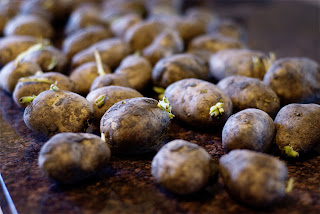Genetically Modified Foods
So…Questions to
address:
1. What do you think
about GM-foods?
(All opinions
welcome!!)
2. Do you think GM
foods should be labeled?
Date: December
3rd, 2012
Why would you want to
genetically modify a fruit or vegetable?
We modify fruits and vegetables to make them superior than
the original ones. Also, we modify them for convenience to fit our needs. For
example, in the past a bag of rice would spoil sooner than the rice we have
nowadays. This is because the present rice is genetically modified. It is more
resistance to the environment than the rice from the past. Leading it to last
several weeks longer than the rice we had before. Also, we modify fruits and
vegetables for aesthetics reasons. When people go to the fruit market or
supermarket, they always go for the fruits or vegetables that look very
colorful and pretty because people assume that those vegetables and fruits are
the best. The others that look opaque are left on the counters to perish
because they don’t look good. Also, we do genetically modify crops to feed large amount of people with the goal to control hunger.
1. What do you think
about GM-foods?
GM-foods offer us a greater quality because they are selected
from the best traits from the true to types. Plant breeders select them based
on the best genotypes and phenotypes available after they test them. Eating
GM-foods should not be avoided after all we are not eating harmful chemicals
present in our foods. We are just eating products with different genetics
traits, which could have happen in our environment by accident anyways. We are
just accelerating the process of nature. Instead of waiting for nature to
select the best traits to that the surrounding can offer, we do it ourselves
while in the process selecting the best genes that adjust to our needs. In
brief, we are not eating anything harmful with GM-foods, but instead we are
consuming crops that possess the best out of the best.
2. Do you think GM
foods should be labeled?
Yes, they should be labeled. By labeling them, they show to
the public the truth. In case in the future there are harmful discoveries
towards some GM products, which is unlikely to happen in my opinion, people
know what they have been consuming. Also, there are people who don’t want to
consume GM-foods, so by labeling them, those people get the freedom that they
deserve to choose whether or not the food they eat is GM-foods. Also, labeling
GM-foods should create more jobs which I see as a positive thing in our
society.














.jpeg)
publix.jpeg)









